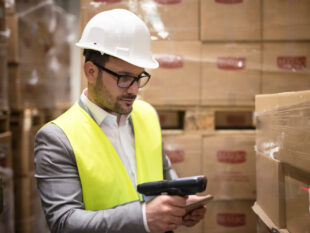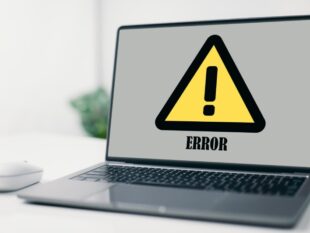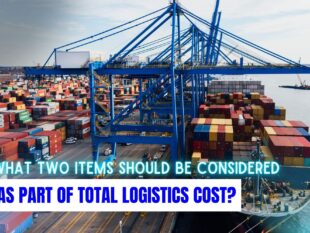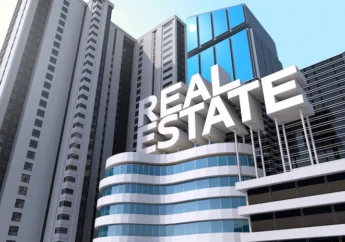How Have Government and Businesses Impacted Energy Efficiency?
by Barsha Bhattacharya Business 29 May 2025
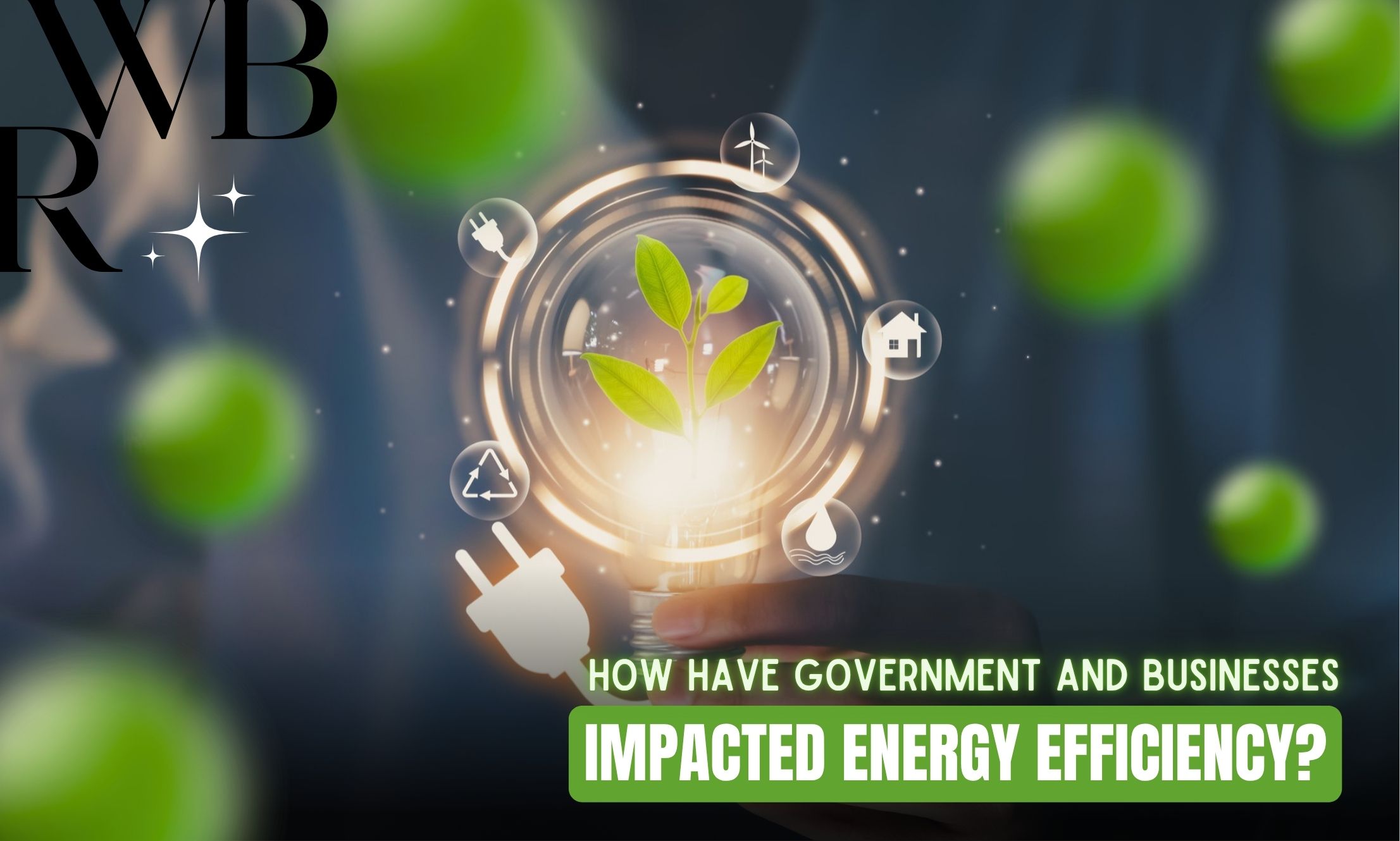
Let’s talk about energy efficiency—it’s not just a buzzword. It’s saving money, reducing waste, and taking care of the planet.
So, what have governments and businesses done for energy efficiency? Big things! Governments are creating energy plans to save costs, cut carbon, and meet sustainability goals.
They’re making public buildings more efficient, tapping renewable energy, and promoting green options.
Businesses aren’t standing still either. From installing energy-efficient equipment to setting ambitious sustainability goals, businesses are on the job.
Many use smart technology to track consumption and cut waste. And where government incentives meet private creativity—bingo!—real change happens. Together, they’re creating a cleaner, smarter future.
Why does the government require an energy plan?
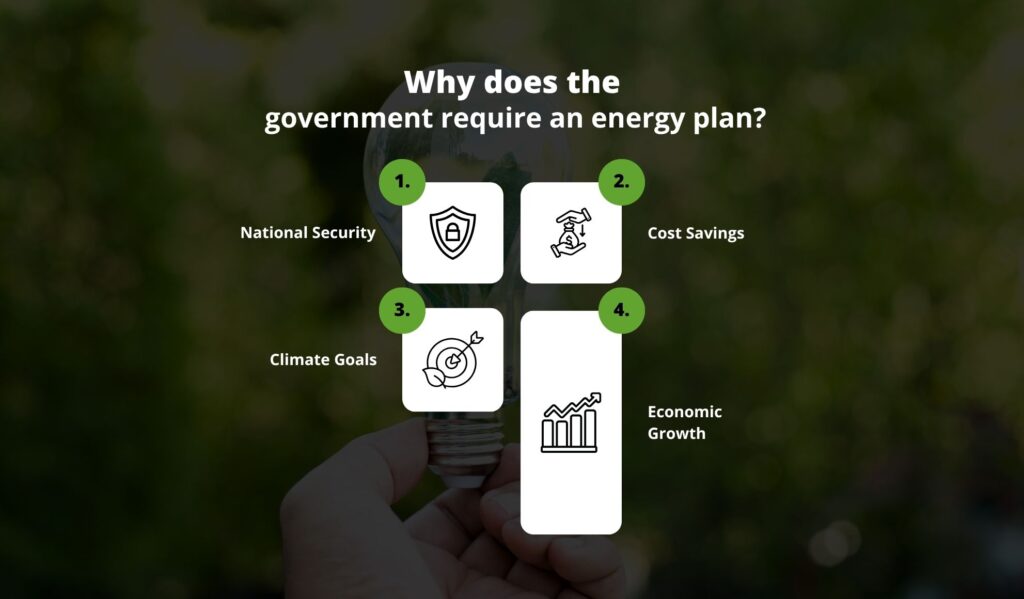
Let’s be real—energy is more than flipping on lights. It is how a nation operates. Governments require energy to power schools, hospitals, roads, public transportation, water treatment, and more.
Without a solid energy plan, things can go wrong quickly, such as increased fuel prices, electricity outages, or even damage to the earth.
So, why do governments require an energy plan? Here’s why:
- National Security: Depending too much on foreign oil or gas can make a country weak. Governments want to ensure they have steady and local energy sources.
- Cost Savings: Energy bills for public buildings and services are no joke. Making things more efficient saves taxpayer money.
- Climate Goals: Most nations would like to reduce carbon emissions. Increasing energy efficiency is one of the quickest means of achieving this.
- Economic Growth: Energy-saving technology generates employment and stimulates the growth of local industries.
An energy plan enables governments to have a clear strategy to take care of everything—ecologically sound and cost-effective. Good for all of us, isn’t it?
Does the public sector aim for sustainability?
Yes, absolutely!
Governments worldwide are setting key sustainability goals. These goals typically include lowering greenhouse gas emissions, improving air and water quality, and consuming more renewable energy.
For instance, consider the case of the United States. The federal government agencies are being forced to consume less energy from buildings and switch to clean energy.
The public sector in the UK has a goal to become net-zero carbon by 2050. Germany and Canada are following suit with country-specific climate plans.
What’s great is that these ambitions aren’t pie-in-the-sky concepts. They’re supported by actual programs, dollars, and timelines.
Public transportation systems are becoming electric. Government buildings are putting up solar panels. Municipalities are spending money on smart streetlights and improved insulation.
In fact, the public sector is not just talking about it—they are doing it.
Public Sector Energy Efficiency Measures
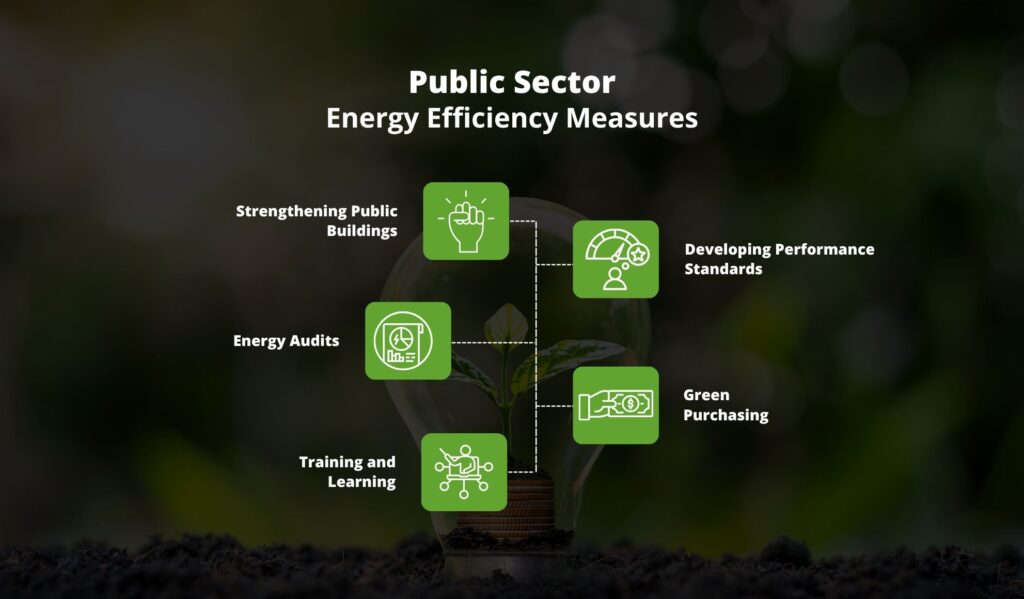
Now, let’s get into the details. What are governments doing to increase energy efficiency? Here are some of the most common (and effective!) ones:
1. Strengthening Public Buildings
Old government buildings tend to be huge energy consumers. They lack insulation, have old-fashioned lighting, and dinosaur-sized heating and air conditioning systems to boot. Governments are now investing in:
- LED lights
- Smart thermostats
- Energy-efficient windows
- Motion detectors for lighting
- New air cooling and heating systems
2. Developing Performance Standards
Others are adopting mandatory energy performance requirements for new construction or building renovation. That is where, if you’re constructing a new government building, it has to be energy-efficient.
3. Energy Audits
All government departments now conduct periodic energy audits on themselves to determine where they are wasting energy and how they can improve.
4. Green Purchasing
This entails purchasing only green products and services. For instance, purchasing energy-efficient appliances or staff who utilize green building techniques.
5. Training and Learning
Governments also educate their staff in energy-saving habits, such as shutting off idle machinery or adjusting computer settings.
These are little steps, but collectively, they mean a lot of savings and fewer carbon emissions. Moreover, they are a good model that can be emulated by private companies.
How Have Government and Businesses Impacted Energy Efficiency?
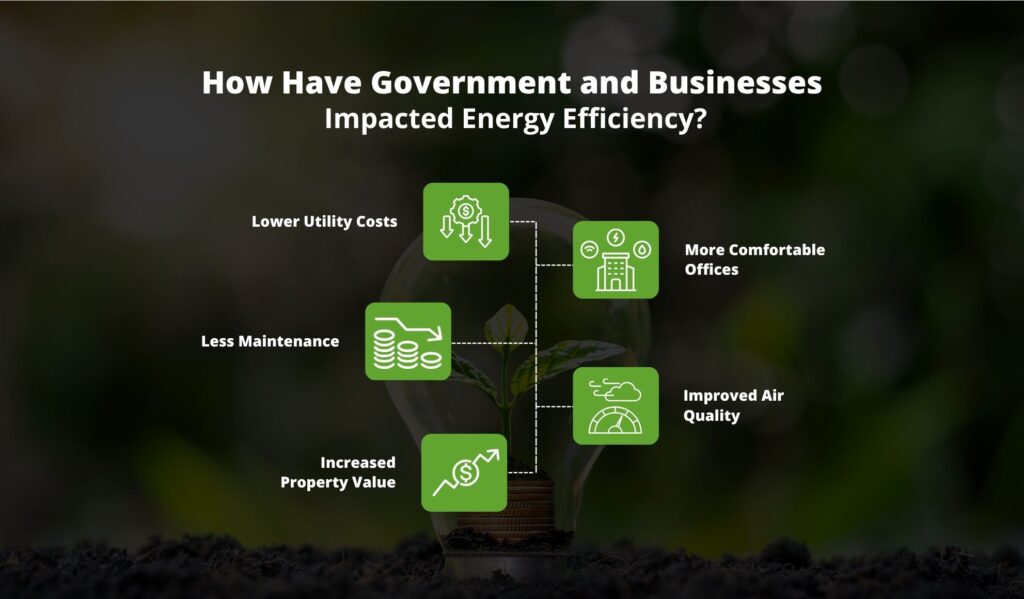
This is the exciting part—viewing the outcomes!
When government buildings are made more efficient, the return is immediate. Here is what happens:
Lower Utility Costs: States and cities save enormous amounts of money annually with energy-saving lighting or improved insulation.
More Comfortable Offices: Upgrades such as enhanced heating and air-conditioning systems make offices cooler in summer and warmer in winter.
Less Maintenance: New systems will be less prone to malfunction and require less maintenance.
Improved Air Quality: Energy-efficient systems tend to incorporate air filters or enhanced ventilation, which is beneficial to the health of everyone.
Increased Property Value: Amazingly, better government buildings can even appreciate in value, as if they were houses.
For example, when the city of Denver retrofitted over 100 city buildings to conserve energy, it saved over $1 million annually in energy costs. That’s a lot!
How Companies Are Getting Engaged in It

Alright, let’s go into business. How have government and businesses impacted energy efficiency? Business is a key part of the narrative.
Why? Because businesses consume a lot of energy. Offices, factories, warehouses, and data centers all require power to function.
But the bright side is—many businesses are becoming wiser about conserving energy, and here’s what they are doing.
1. Corporate Sustainability Goals
Similar to governments, most companies now have sustainability goals. These may include:
- Reduction of emissions by a percentage.
- Going carbon-neutral by a certain year
- Cutting energy consumption in half within a decade.
These are not publicity stunts. Investors, employees, and customers do care about how green a company is.
2. Energy-Efficient Appliances
Firms are investing in:
- High-efficiency equipment
- Intelligent lighting systems
- Better windows and insulation
- Roof-top solar panels
It is a bit pricey at first, but it is worth the long-term savings.
3. Smart Technology
Smart meters, energy monitoring software, and AI systems enable businesses to precisely monitor how and when they consume energy and take action in the moment.
4. Green Certifications
Certifications such as LEED (Leadership in Energy and Environmental Design) and ENERGY STAR certification enable companies to highlight their energy-saving initiatives. They also gain the trust of environment-conscious consumers.
5. Employee Involvement
Other companies also have initiatives that promote saving electricity, such as turning off the computer when leaving the house or working during the day.
6. Real-Life Example
How about Google? They’ve been carbon-neutral since 2007 and now they’re going to fuel all their data centers with carbon-free electricity 24/7.
That’s über efficiency! They are not alone, however—small businesses are getting involved as well, such as a bakery installing LED lights or a store replacing air conditioners with energy-efficient models.
When do business and government collaborate?
Energy efficiency matters more to governments and companies, and their collaboration is making a dramatic impact.
Governments realize that they must have smart energy plans—both for meeting climate targets but also for saving money and improving public services.
They have introduced energy-saving initiatives in public buildings, established performance regulations, and offered incentives to encourage green practices.
The most thrilling aspect is when governments and companies come together. Programs such as PACE (Property Assessed Clean Energy) in America assist companies, particularly small-sized ones, to finance energy upgrades.
They assist companies to pay in installments via property tax. Other forms of assistance, such as
- Grants,
- Tax credits and technical assistance,
- Incentivize companies to invest in solar panels,
- Energy-efficient lighting, and
- Energy-efficient appliances.
These collaborations assist in bridging energy gaps that would be too expensive or complex for companies to bridge on their own. Businesses bring new innovation, growth, and adaptability.
They experiment with new technology, respond to what their customers demand in green practices, and frequently do more than the government mandates.
In general, they offer a win-win scenario: cleaner air, saved energy dollars, and a more robust economy.
Whether a government department is installing LED bulbs or a small café is installing solar power with the assistance of the government, collaboration between the private and public sectors is becoming the most effective means of initiating actual changes in energy efficiency.
Wrapping It Up!
What’s the Main Point? Energy efficiency is not a buzzword—it’s a financially savvy way to save money, cut waste, and help the planet.
So, how have government and businesses impacted energy efficiency? Governments are stepping forward with clear plans, setting sustainability goals, and retrofitting public buildings with energy-saving measures.
They are offering incentives and policies that make green decisions more affordable. Meanwhile, businesses are jumping in with new technology, better equipment, and ambitious goals to cut emissions.
They are using tools like energy monitoring systems and applying green principles everywhere. But the real revolution comes when governments and businesses work together—pooling resources, expertise, and finance to make lasting impacts.
From LED lighting in town halls to solar panels on office buildings, the effects are growing by the day.
And even the little things we do—like switching a light switch off—matter. We are all part of this energy-saving revolution.
Also read















